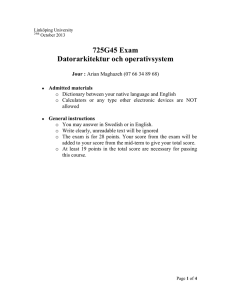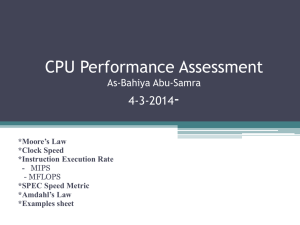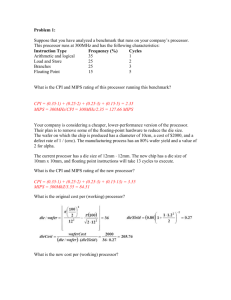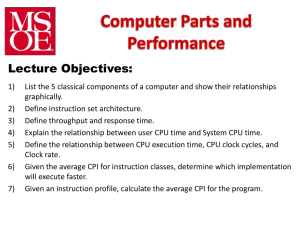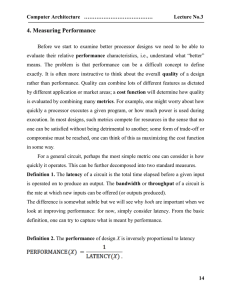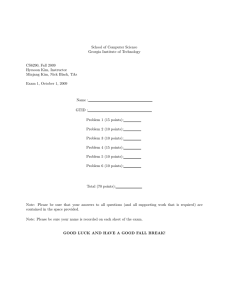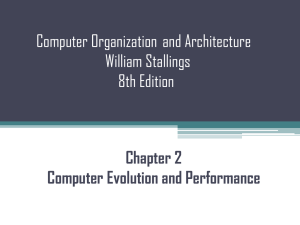16 marks - SNS Courseware
advertisement
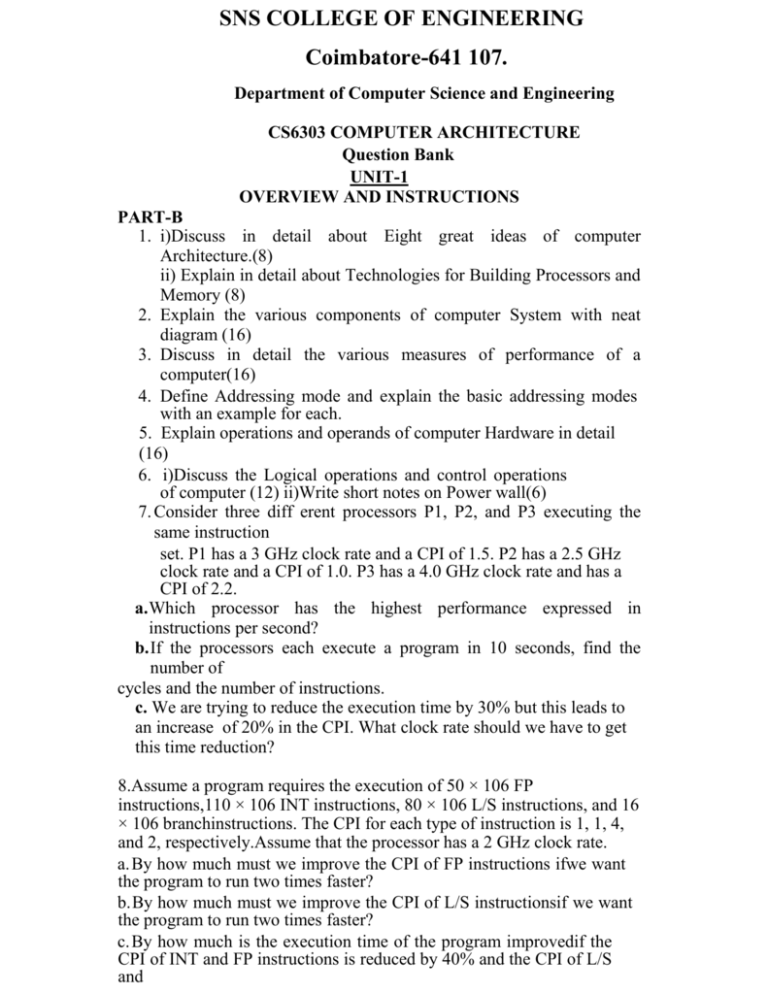
SNS COLLEGE OF ENGINEERING Coimbatore-641 107. Department of Computer Science and Engineering CS6303 COMPUTER ARCHITECTURE Question Bank UNIT-1 OVERVIEW AND INSTRUCTIONS PART-B 1. i)Discuss in detail about Eight great ideas of computer Architecture.(8) ii) Explain in detail about Technologies for Building Processors and Memory (8) 2. Explain the various components of computer System with neat diagram (16) 3. Discuss in detail the various measures of performance of a computer(16) 4. Define Addressing mode and explain the basic addressing modes with an example for each. 5. Explain operations and operands of computer Hardware in detail (16) 6. i)Discuss the Logical operations and control operations of computer (12) ii)Write short notes on Power wall(6) 7. Consider three diff erent processors P1, P2, and P3 executing the same instruction set. P1 has a 3 GHz clock rate and a CPI of 1.5. P2 has a 2.5 GHz clock rate and a CPI of 1.0. P3 has a 4.0 GHz clock rate and has a CPI of 2.2. a. Which processor has the highest performance expressed in instructions per second? b. If the processors each execute a program in 10 seconds, find the number of cycles and the number of instructions. c. We are trying to reduce the execution time by 30% but this leads to an increase of 20% in the CPI. What clock rate should we have to get this time reduction? 8.Assume a program requires the execution of 50 × 106 FP instructions,110 × 106 INT instructions, 80 × 106 L/S instructions, and 16 × 106 branchinstructions. The CPI for each type of instruction is 1, 1, 4, and 2, respectively.Assume that the processor has a 2 GHz clock rate. a. By how much must we improve the CPI of FP instructions ifwe want the program to run two times faster? b. By how much must we improve the CPI of L/S instructionsif we want the program to run two times faster? c. By how much is the execution time of the program improvedif the CPI of INT and FP instructions is reduced by 40% and the CPI of L/S and Branch is reduced by 30%? 9.Explain Branching operations with example 10.Explain the following addressing modes in detail with diagram i)Immediate addressing ii)Register addressing, iii)Baseor displacement addressing, iv)PC-relative addressing v)Pseudodirect addressing UNIT-II ARITHMETIC OPERATIONS PART- B 1. Explain the Multiplication algorithm in detail with diagram and examples 2. Discuss in detail about division algorithm in detail with diagram and examples 3. Explain in detail about floating point addition with example 4. Explain in detail about floating point multiplication 5. Give the algorithm for multiplication of signed 2’s complement numbers and illustrate with an example 6. Multiply the following pair of signed 2’s complement numbers : A = 010111, B = 101100. 7. Add the numbers 0.510 and -0.437510using binary Floating point Addition algorithm 8. Multiply 1.10 10X 1010and 9.200X10-5 using binary Floating point multiplication 9.Calculate the division of A and B A : 3.264 X 103 B: 6.52 X 102 10.Show the IEEE 754 binary representation of the number 0.75 10in single and double precision UNIT III PROCESSOR AND CONTROL UNIT PART B 1. Explain the basic MIPS implementation of instruction set 2. Explain the basic MIPS implementation with necessary multiplexers and control lines 3. What is control hazards ?Explain the methods for dealing with the control hazards. 4. Discuss the influence of pipelining in detail. 5. Explain how the instruction pipeline works. What are the various situations where an instruction pipeline can stall? What can be its resolution? 6. What is data hazard? How do you overcome it?What are its side effects? 7. Discuss the data and control path methods in pipelining 8. Explain dynamic branch prediction 9. How exceptions are handled in MIPS 10.Explain in detail about building a datapath 11.Explain in detail about control implementation scheme UNIT IV PARALLELISAM PART- B 1. Explain Instruction level parallelism 2. Explain the difficulties faced by parallel processing programs 3. Explain shared memory multiprocessor 4. Explain in detail Flynn’s classification of parallel hardware 5. Explain cluster and other Message passing Multiprocessor 6. Explain in detail hardware Multithreading 7. Explain SISD and MIMD 8. Explain SIMD and SPMD 9. Explain Multicore processors 10. Explain the different types of multithreading UNIT V MEMORY AND I/O SYSTEM PART- B 1. Explain in detail about memory Technologies 2. Expain in detail about memory Hierarchy with neat diagram 3. Describe the basic operations of cache in detail with diagram 4. Discuss the various mapping schemes used in cache design(10) A byte addressable computer has a small data cache capable of holding eight 32-bit words. Each cache block contains 132-bit word. When a given program is executed, the processor reads data from the following sequence of hex addresses – 200, 204, 208, 20C, 2F4, 2F0, 200, 204,218, 21C, 24C, 2F4. The pattern is repeated four times. Assuming that the cache is initially empty, show the contents of the cache at the end of each pass, and compute the hit rate for a direct mapped cache. (6) 5. Discuss the methods used to measure and improve the performance of the cache. 6. Explain the virtual memory address translation and TLB withnecessary diagram. 7. Draw the typical block diagram of a DMA controller and explain how it is used for direct data transfer between memory and peripherals. 8. Explain in detail about interrupts with diagram 9. Describe in detail about programmedInput/Output with neat diagram 10.Explain in detail about I/O processor.
